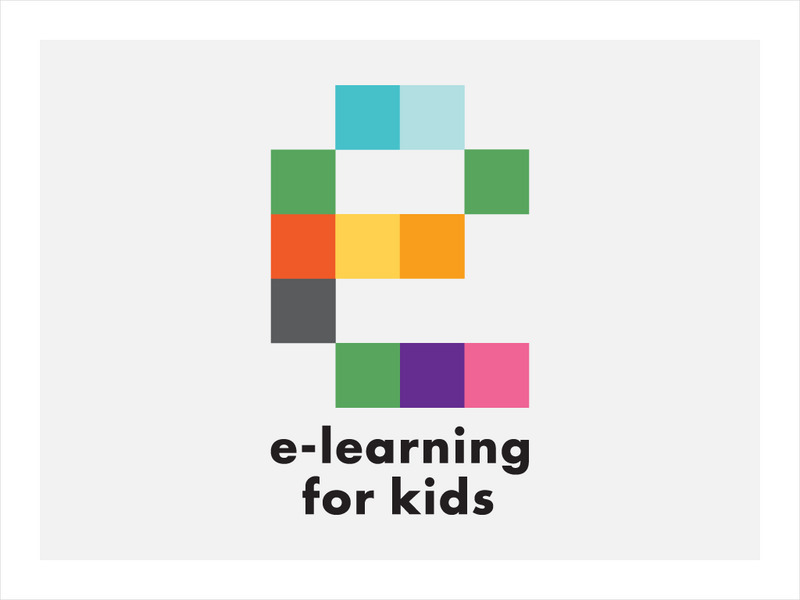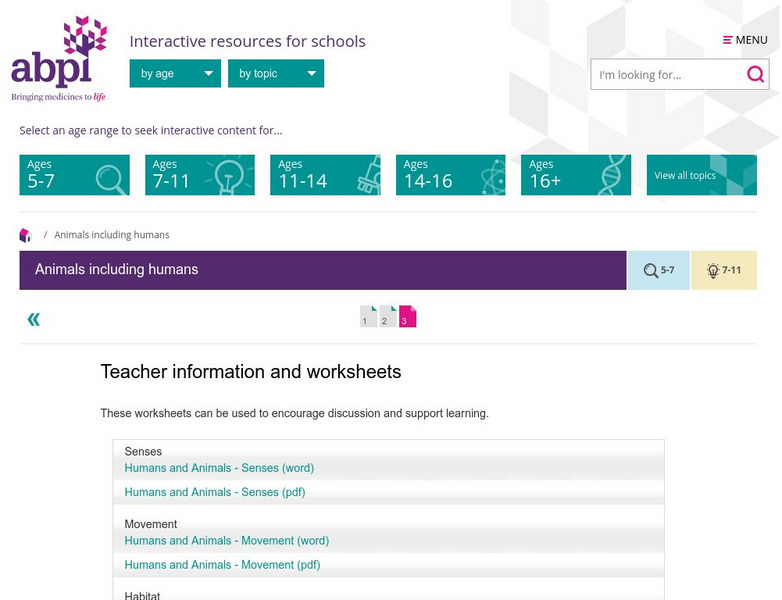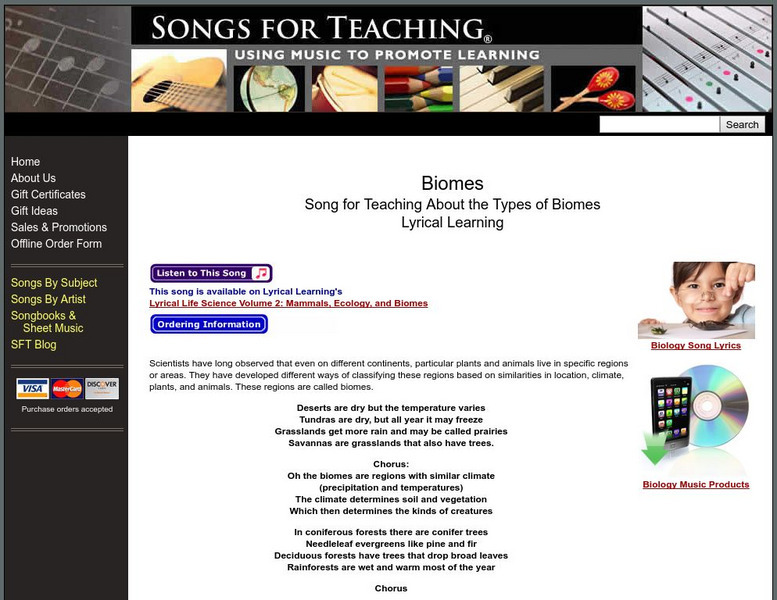Utah Education Network
Uen: Are You Among the Living or the Nonliving?
Great site to test your knowledge on living and nonliving things. Play a game that tests your knowledge, and view pictures to pick out each living organism.
Utah Education Network
Uen: Are You Dead or Alive?
A great site that offers real life examples of what makes something living or nonliving.
Other
Science4 Us: Living/nonliving
Students explore the similarities and differences between living and nonliving things and learn four characteristics that all living things share (they have needs, they are made up of parts, they respond to change, they reproduce)....
E-learning for Kids
E Learning for Kids: Science: Denmark: How Can We Define Living and Non Living Things?
Martin Dahl, a Danish scientist, does research on living things and non-living things. Come see what he discovers.
E-learning for Kids
E Learning for Kids: Science: Scotland: How Can We Group Living Things Based on Characteristics?
Lilly is from Peru, and she's traveling the world. Right now, she's in Scotland. Join her while she studies living and non-living things.
University of Arizona
Center for Insect Science Education Outreach: Getting to Know You: Meal Worms
Students become connected with nature by handling and caring for another living creature. Focuses on insect care and familiarization with a meal worm.
The Association of the British Pharmaceutical Industry
Abpi: Active Science Modules: Humans and Animals Worksheets
Activities to accompany the Active science learning modules.
E-learning for Kids
E Learning for Kids: Science: Australia: How Do Environments Affect Living Things?
Noah lives near the Great Barrier Reef. Go explore this diverse habitat with him.
Kidport
Kidport: Life in the Sea
Teachers can utilize this colorful interactive site so that students can explore the wonderful world of sea animals. Use this site to learn their characteristics and living environments.
Ducksters
Ducksters: Science for Kids: Coral Reef Biome
Kids learn about the coral reef biome. Much of ocean life lives in this important aquatic ecosystem.
Smithsonian Institution
National Museum of Natural History: Ocean Portal, You Navigate
Delight in the fresh colors, sights, and sounds on this dynamic site on the ocean. Major categories consist of Ocean Life & Ecosystems, The Ocean Over Time, Ocean Science, and The Ocean and You. New information on sharks, a slideshow...
Other
Freie Universitat Berlin: Everyday Objects [Pdf]
In our daily lives we are surrounded by objects which have specific roles and functions. Some are relatively simple, like a drinking cup. Others are much more complex, like a mobile phone. This wonderful 56-page handbook presents...
Alabama Learning Exchange
Alex: Creepy Caterpillars to Beautiful Butterflies
Students will explore the life cycle of a butterfly using a website and observations of caterpillar metamorphosis. This lesson plan will incorporate science, mathematics, language arts, and art.
PBS
Pbs Kids: Plum Landing: Explore the Outback
In this interactive game, players are challenged to complete a series of missions to photograph desert plants and animals in the Australian outback. Through the clues provided, players learn about desert ecosystems, the plants and...
Read Works
Read Works: Groundhogs Are Diggers
[Free Registration/Login Required] An informational text about groundhogs and the burrows they live in. A question sheet is available to help students build skills in reading comprehension.
Other
Science4 Us: Animals
In online and offline activities, students broaden their understanding of animals by learning to identify and classify animals into six categories: mammals, birds, fish, amphibians, reptiles, and invertebrates.
PBS
Pbs Learning Media: Biome in a Baggie
This ZOOMSci video segment shows how to create self-contained environments and explore how plants grow under different conditions. [3:24]
Songs for Teaching
Songs for Teaching: Types of Biomes
Doug Eldon performs this great song which tells about the different biomes and their characteristics. Great way to begin your unit on the biomes.













